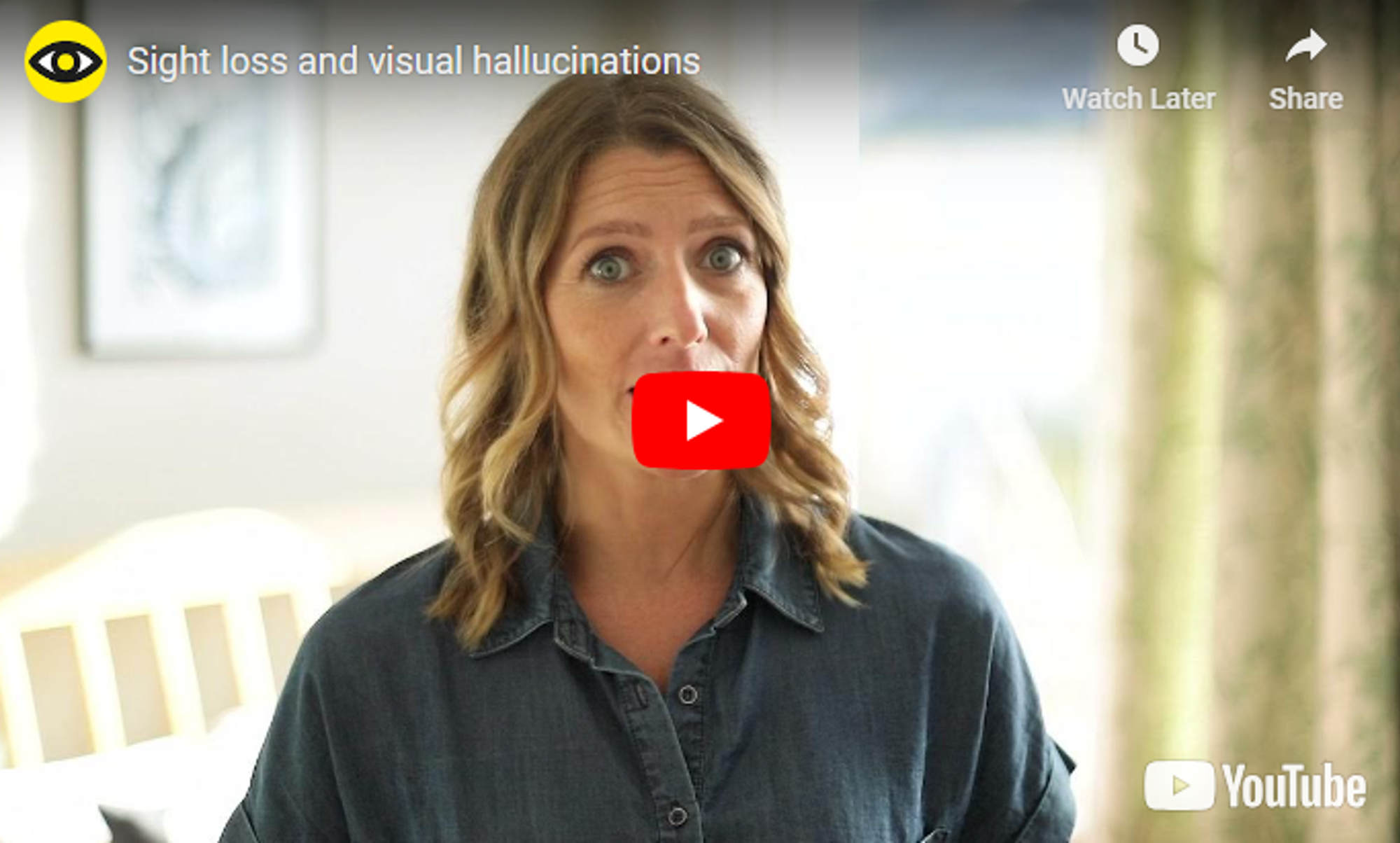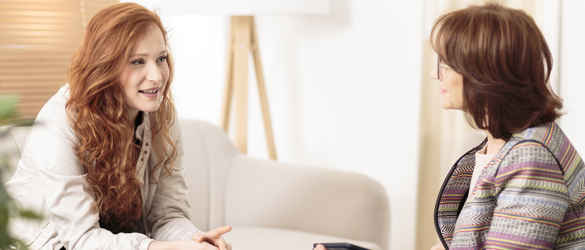
Charles Bonnet syndrome (CBS)
Visual hallucinations can occur as a result of sight loss.
Up to half of all people with macular degeneration are thought to experience visual hallucinations at some time.
When hallucinations happen as a result of sight loss, they are known as Charles Bonnet syndrome (CBS), after the 18th century Swiss scientist and philosopher who first described the condition. Charles Bonnet hallucinations are not a sign of mental illness.
They are more likely to occur if both eyes are affected by sight loss but can occur with problems in one eye only. The hallucinations often start after a sudden worsening of vision.
What is a visual hallucination?
A visual hallucination is the same experience as really seeing something, but the ‘something’ is not actually there.
Charles Bonnet hallucinations appear to exist in the real world rather than in the mind’s eye. They come and go unannounced and can last for just a few seconds or as long as a day or more.
CBS itself can last from days to many years. For most people the hallucinations improve with time so that they only occur very occasionally.
What do these hallucinations look like?
Charles Bonnet hallucinations can be simple unformed flashes of light, colours or shapes.
However, many people see more elaborate forms such as geometrical grids and lattices.
Some people with CBS report seeing landscaped gardens or vistas, animals, people, or processions of miniature costumed figures wearing hats, or even disembodied faces with staring eyes. The hallucinations are often seen in more vivid detail than real life.
Some people enjoy their hallucinations. However, they are more often an unwanted distraction, and can be frightening.
They can get in the way of normal vision too.
Can you stop the hallucinations caused by CBS?
The Macular Society has sponsored research by Dr Dominic ffytche at King’s College London to look into ways of stopping Charles Bonnet hallucinations when they occur.
Dr ffytche recommends using eye movements to lessen the impact and length of hallucinations.
Eye movements activate visual parts of the brain in people with macular disease – even if they have little remaining vision.
These movements may stop certain types of hallucinations, particularly the patterns and colours.
When a hallucination appears try the following exercise:
- Imagine two points about a metre (3ft) apart left and right on a wall in front of you. Stand about a metre and a half away and look from one point to the other once every second or faster for 15–30 seconds. Don’t move your head and keep your eyes open when looking left and right. Have a break of a few seconds.
- If your hallucinations are still there, try repeating the exercise.
- If they have not stopped after four or five attempts, the technique is unlikely to work. You may however want to try again on another occasion or for a different type of hallucination.
Other ways to stop a hallucination:
- Shut your eyes or look away from the image.
- Switch on the room lights or, if in a brightly lit area, move somewhere darker.
- Simply get up and do something else.
- This can cause the hallucinations to disappear; however, they often continue.
Other treatments
Stopping hallucinations when they occur works for some people but others need more help.
There are treatments available now and being developed.
Some medications can help people with very distressing hallucinations. These medications are usually prescribed for other conditions but have been shown to work for Charles Bonnet hallucinations. It would usually require a specialist doctor to prescribe them and further tests to see if they are safe to use and to rule out other causes of hallucinations.
Developing new treatments for hallucinations is important. The Macular Society has sponsored research led by Professor John-Paul Taylor at Newcastle University to investigate whether using a mild electric current on the scalp at the back of the head can stop visual hallucinations caused by Charles Bonnet syndrome.
The technique is called ‘transcranial direct current stimulation’ (tDCS).
Preliminary findings suggest it is helpful in reducing the number of hallucinations experienced and there are few, if any, side effects but further research is needed to confirm this.
What causes it in people with sight loss?
When visual signals leave the eye they go to the back of the brain (the occipital lobe) to the primary visual receiving area.
From here the signals are relayed to a series of map-like areas, each specialised in a different aspect of seeing. There is an area specialised for movement, an area for colour, several for faces, one for landscapes and many others. Scanning studies have revealed what happens in the brains of people while they hallucinate.
These studies help explain some of the features of Charles Bonnet hallucinations.
With our eyes open, the visual brain expects to receive and process a flood of complex electrical signals. In people with eye disease or a break in the visual pathways, what was once a flood becomes a trickle. This leaves the visual areas of the brain with little to do.
The idle visual brain cells, waiting for an appropriate trigger, begin to fire spontaneously.
If this happens in the colour area, people experience hallucinations of colour; if in the object area, they see objects and so on. After a while, the visual brain gets used to the lower level of information from the eye and the spontaneous firing lessens or stops. This explains why, for many people, the hallucinations gradually reduce over time.
Video: Sight loss and visual hallucinations
What do we still need to know?
More research into Charles Bonnet syndrome is needed. For example, we do not know why only some people with sight loss have hallucinations. Research funded by the Macular Society is helping answer this question but more is needed.
One thing that is certain is that hallucinations do not mean the person is mentally ill. However bizarre, frightening or funny their content, Charles Bonnet hallucinations are no more than a normal brain’s response to reduced visual input.
While they may be an inconvenience, they are not a cause for concern. If you find your hallucinations upsetting, talk to your doctor or ophthalmologist about the problem.
These characteristics might suggest that there are conditions contributing to the hallucinations other than Charles Bonnet syndrome:
- voices and visions
- hallucinations only of people and animals, without hallucinations of patterns, colours, shapes and lines
- elaborate explanations
- calling police or ambulance
- forgetting the hallucinations are unreal at the time they occur
- confusion / memory concerns
- accompanying person more aware of the hallucinations than the patient.
What support is there for people with CBS?
The Macular Society runs a CBS support group via our counselling service. This is done over the telephone and you can speak to other people experiencing CBS as well as one of our professional counsellors.
Our helpline can give you advice and information on CBS. If you feel you or your family need more tailored support, our counselling service is able to give you a call to discuss one-to-one telephone or group sessions.
For more information, either call the Macular Society Helpline on 0300 3030 111 to complete the referral form or make a referral for the helpline.
Support for you
We provide free information and support to those with macular disease, along with their family and friends, to help people keep their independence.
Are you a young person or of working age?
The Macular Society supports everyone impacted by macular disease, including those with less common types of macular disease who may be younger or still working.
Free confidential advice and support
Call our helpline on 0300 3030 111
Lines are open 9am - 5pm Monday to Friday
About the Macular Society Helpline




